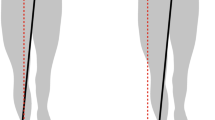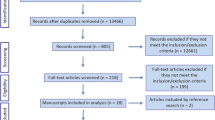Abstract.
Reflexes are important in the control of such daily activities as standing and walking. The goal of this study is to establish how reflexive feedback of muscle length, velocity, and force can lead to stable equilibria (i.e., posture) and limit cycles (e.g., ankle clonus and gait). The influence of stretch reflexes on the behavior and stability of musculoskeletal systems was examined using a model of human stance. We computed branches of fold and Hopf bifurcations by numerical bifurcation analysis of the model. These fold and Hopf branches divide the parameter space, constructed by the reflexive feedback gains, into regions of different behavior: unstable posture, stable posture, and stable limit cycles. These limit cycles correspond to a neural deficiency, termed ankle clonus. We also linked bifurcation analysis to known biomechanical concepts by linearizing the model: the fold branch corresponds to zero ankle stiffness and defines the minimal muscle length feedback necessary for stable posture; the Hopf branch is related to unstable reflex loops. Crossing the Hopf branch can lead to the above-mentioned stable limit cycles. The Hopf branch reduces with increasing time delays, making the subject’s posture more susceptible to unstable reflex loops. This might be one of the reasons why elderly people, or those with injuries to the central nervous system, often have trouble with standing and other posture tasks. The influence of cocontraction and force feedback on the behavior of the posture model was also investigated. An increase in cocontraction leads to an increase in ankle stiffness (i.e., intrinsic muscle stiffness) and a decrease in the effective reflex loop gain. On the one hand, positive force feedback increases the ankle stiffness (i.e., intrinsic and reflexive muscle stiffness); on the other hand it makes the posture more susceptible to unstable reflex loops. For negative force feedback, the opposite is true. Finally, we calculated areas of reflex gains for perturbed stance and quiet stance in healthy subjects by fitting the model to data from the literature. The overlap of these areas of reflex gains could indicate that stretch reflexes are the major control mechanisms in both quiet and perturbed stance. In conclusion, this study has successfully combined bifurcation analysis with the more common biomechanical concepts and tools to determine the influence of reflexes on the stability and quality of stance. In the future, we will develop this line of research to look at rhythmic tasks, such as walking.
Similar content being viewed by others
References
Amemiya M, Yamaguchi T (1984) Fictive locomotion of the forelimb evoked by stimulation of the mesencephalic locomotor region in the decerebrate cat. Neurosci Lett 50:91–96
Arrowsmith DK, Place CM (1990) An introduction to dynamical systems. Cambridge University Press, Cambridge, UK, p 423
Boulgarides LK, McGinty SM, Willett JA, Barnes CW (2003) Use of clinical and impairment-based tests to predict falls by community-dwelling older adults. Phys Ther 83:328–339
Brown TG (1911) The intrinsic factors in the act of progression in the mammal. Proc R Soc Lond B84:308–319
Capaday C (2000) Control of a ‘simple’ stretch reflex in humans. Trends Neurosci 23:528–529
Capaday C (2001) Force-feedback during human walking. Trends Neurosci 24:10
Cohen AH, Wallen P (1980) The neuronal correlate of locomotion in fish. ‘‘Fictive swimming’’ induced in an in vitro preparation of the lamprey spinal cord. Exp Brain Res 41:11–18
Dietz V (1998) Evidence for a load receptor contribution to the control of posture and locomotion. Neurosci Biobehav Rev 22:495–499
Dietz V, Duysens J (2000) Significance of load receptor input during locomotion: a review. Gait Posture 11:102–110
Dingwell JB, Cusumano JP (2000) Nonlinear time series analysis of normal and pathological human walking. Chaos 10:848–863
Dingwell JB, Cusumano JP, Sternad D, Cavanagh PR (2000) Slower speeds in patients with diabetic neuropathy lead to improved local dynamic stability of continuous overground walking. J Biomech 33:1269–1277
Dingwell JB, Cusumano JP, Cavanagh PR, Sternad D (2001) Local dynamic stability versus kinematic variability of continuous overground and treadmill walking. J Biomech Eng 123:27–32
Duysens J (2000) Reply. Trends Neurosci 23:529–530
Duysens J, Van de Crommert HW (1998) Neural control of locomotion; The central pattern generator from cats to humans. Gait Posture 7:131–141
Duysens J, Clarac F, Cruse H (2000) Load-regulating mechanisms in gait and posture: comparative aspects. Physiol Rev 80:83–133
Engelborghs K, Luzyanina T, Samaey G (2001) DDE-BIFTOOL v. 2.00: a Matlab package for bifurcation analysis of delay differential equations. In: Leuven KU (ed) Department of Computer Science, Heverlee, The Netherlands
Fitzpatrick R, Rogers DK, McCloskey DI (1994) Stable human standing with lower-limb muscle afferents providing the only sensory input. J Physiol 480(Pt 2):395–403
Forner Cordero A (2003) Human gait, stumble and ... fall? Mechanical limitations of the recovery from a stumble. Engineering technology. University of Twente, Enschede, The Netherlands, p 196
Garcia M, Chatterjee A, Ruina A, Coleman M (1998) The simplest walking model: stability, complexity, and scaling. J Biomech Eng 120:281–288
Grillner S, McClellan A, Perret C (1981) Entrainment of the spinal pattern generators for swimming by mechano- sensitive elements in the lamprey spinal cord in vitro. Brain Res 217:380–386
Hidler JM, Rymer WZ (1999) A simulation study of reflex instability in spasticity: origins of clonus. IEEE Trans Rehabil Eng 7:327–340
Hidler JM, Rymer WZ (2000) Limit cycle behavior in spasticity: analysis and evaluation. IEEE Trans Biomed Eng 47:1565–1575
Houk JC (1979) Regulation of stiffness by skeletomotor reflexes. Annu Rev Physiol 41:99–114
Hurmuzlu Y, Basdogan C (1994) On the measurement of dynamic stability of human locomotion. J Biomech Eng 116:30–36
Hurmuzlu Y, Basdogan C, Stoianovici D (1996) Kinematics and dynamic stability of the locomotion of post-polio patients. J Biomech Eng 118:405–411
Inman V, Ralston H, Todd F (1981) Human Walking. Williams and Wilkins, Baltimore, MD
Iooss G, Joseph DD (1990) Elementary stability and bifurcation theory. Springer, Berlin Heidelberg New York, p 324
Kirsch RF, Rymer WZ (1987) Neural compensation for muscular fatigue: evidence for significant force regulation in man. J Neurophysiol 57:1893–1910
Kuznetsov YA (1998) Elements of applied bifurcation theory. In: Marsden JE, Sirovich L (eds) Applied mathematical sciences vol 112. Springer, Berlin Heidelberg New York, p 591
MacKay-Lyons M (2002) Central pattern generation of locomotion: a review of the evidence. Phys Ther 82:69–83
Masani K, Popovic MR, Nakazawa K, Kouzaki M, Nozaki D (2003) Importance of body sway velocity information in controlling ankle extensor activities during quiet stance. J Neurophysiol 90:3774–3782
McGeer T (1989) Powered flight, child’s play, silly wheels, and walking machines. In: Proceedings of the IEEE international conference on robotics and automation, Piscataway, NJ, pp 1592–1597
McGeer T (1990) Passive dynamic walking. Int J Robot Res 9:62–82
McMahon TA (1984) Muscles, reflexes, and locomotion. Princeton University Press, Princeton, NJ, p 331
Mihelj M, Matjacic Z, Bajd T (2000) Postural activity of constrained subject in response to disturbance in sagittal plane. Gait Posture 12:94–104
Morasso PG, Sanguineti V (2002) Ankle muscle stiffness alone cannot stabilize balance during quiet standing. J Neurophysiol 88:2157–2162
Schwab AL, Wisse M (2001) Basin of attraction of the simplest walking model. In: Proceedings of ASME 2001 design engineering technical conferences and computers and information in engineering conference, Pittsburgh
Seydel R (1988) From equilibrium to chaos: practical bifurcation and stability analysis. Elsevier, New York, p 367
Sherwood L (1997) Human physiology: from cells to systems. Wadsworth, Belmont, p 753
Shik ML, Severin FV, Orlovskii GN (1966) Control of walking and running by means of electrical stimulation of the mid-brain. Biophysics 11:756–765
Sinkjaer T, Toft E, Andreassen S, Hornemann BC (1988) Muscle stiffness in human ankle dorsiflexors: intrinsic and reflex components. J Neurophysiol 60:1110–1121
Taga G (1995a) A model of the neuro-musculo-skeletal system for human locomotion: I . Emergence of basic gait. Biol Cybern 73:97–111
Taga G (1995b) A model of the neuro-musculo-skeletal system for human locomotion: II Real-time adaptability under various constraints. Biol Cybern 73:113–121
Taga G (1998) A model of the neuro-musculo-skeletal system for anticipatory adjustment of human locomotion during obstacle avoidance. Biol Cybern 78:9–17
Taga G, Yamaguchi Y, Shimizu H (1991) Self-organized control of bipedal locomotion by neural oscillators in unpredictable environment. Biol Cybern 65:147–159
Thunnissen J (1993) Muscle force prediction during human gait. University of Twente, Den Haag, The Netherlands, p 221
Van der Helm FC, Schouten AC, de Vlugt E, Brouwn GG (2002) Identification of intrinsic and reflexive components of human arm dynamics during postural control. J Neurosci Meth 119:1–14
Van der Helm FCT, Rozendaal LA (2000) Musculoskeletal systems with intrinsic and proprioceptive feedback. In: Winters JM, Crago P (eds) Neural control of posture and movement. Springer, Berlin Heidelberg New York, pp 164–174
Winter DA, Patla AE, Prince F, Ishac M, Gielo-Perczak K (1998) Stiffness control of balance in quiet standing. J Neurophysiol 80:1211–1221
Winters JM, Stark L (1985) Analysis of fundamental human movement patterns through the use of in- depth antagonistic muscle models. IEEE Trans Biomed Eng 32:826–839
Winters JM, Stark L (1987) Muscle models: what is gained and what is lost by varying model complexity. Biol Cybern 55:403–420
Yamaguchi GT, Sawa AGU, Morgan DW, Fesler MJ, Winters JM (1990) A survey of human musculotendon actuator properties. In: Winters JM, Woo SL-Y (eds) Multiple muscle systems: biomechanics and movement organization. Springer, Berlin Heidelberg New York, pp 717–773
Zehr EP, Stein RB (1999) What functions do reflexes serve during human locomotion? Prog Neurobiol 58:185–205
Author information
Authors and Affiliations
Corresponding author
Rights and permissions
About this article
Cite this article
Verdaasdonk, B., Koopman, H., van Gils, S. et al. Bifurcation and stability analysis in musculoskeletal systems: a study in human stance. Biol. Cybern. 91, 48–62 (2004). https://doi.org/10.1007/s00422-004-0494-2
Received:
Accepted:
Published:
Issue Date:
DOI: https://doi.org/10.1007/s00422-004-0494-2




